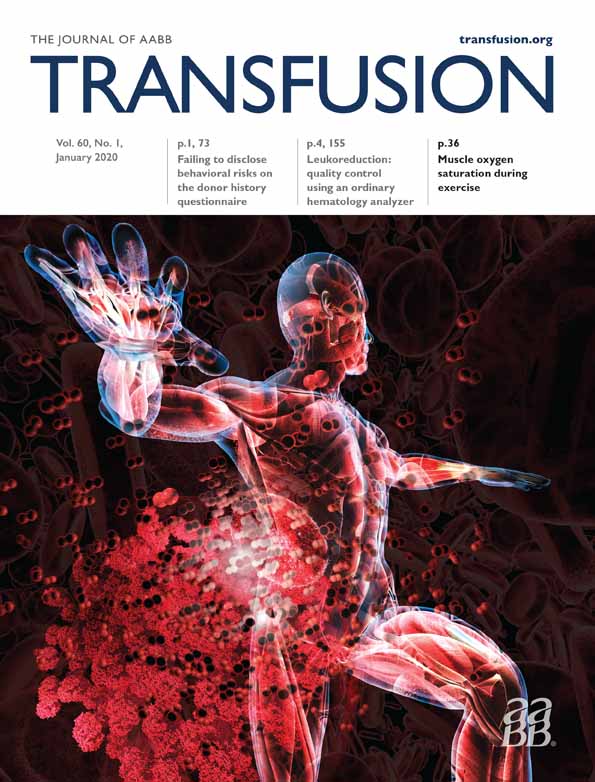The United States' potential blood donor pool: updating the prevalence of donor-exclusion factors on the pool of potential donors
Abstract
BACKGROUND/CASE STUDIES
Despite decreased blood use, there are supply limitations. Therefore, it is important to determine the number of people potentially eligible to donate blood. This study updates an analysis from 2007 to estimate the pool of eligible blood donors in the United States.
STUDY DESIGN/METHODS
We developed a revised epidemiologic model to account for changes in donor exclusion factors based on AABB standards. Donor exclusionary factors were identified and epidemiologic databases selected to enumerate the population prevalence of the donor exclusion factors. Prevalence data were adjusted for age, duration of exclusion, and comorbidities. The number of excluded individuals is calculated to estimate the current size of the eligible blood donor pool. The current study incorporates changes in demographic characteristics that have altered the pool of eligible blood donors.
RESULTS/FINDINGS
The pool of eligible blood donors increased by approximately 93.9 million from 111 million persons in 2007 to 204.9 million persons in 2018, while the population of the United States increased by 34 million persons (from 293 million to 327 million). The number of donor exclusion factors increased from 31 to 38. Overall, the pool of eligible blood donors increased from 37.9% to 62.6% of the total population.
The single largest change impacting the pool of eligible blood donors is the inclusion of individuals 65 years and older, increasing the eligible blood donor pool by 51 million of the new 93.9 million persons However, this increase in number of potential donors 65 years and older is offset by a corresponding increase in the prevalence of donor exclusion factor impact in individuals aged 65 years and above.
CONCLUSION
A very large number of people are potentially eligible to donate blood. Therefore, blood supply limitations appear to be due to other factors. We suggest that these factors are differences in social commitments by changing demographic populations and the elimination of high-cost blood collection operations by blood suppliers.
CONFLICT OF INTEREST
The authors have disclosed no conflicts of interest.




